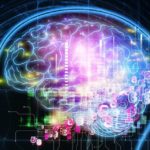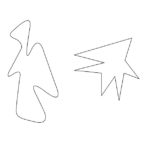Do you hear colors? It’s not your imagination. It’s synaesthesia.
“Now I listen to Goya and Dalí. Going to the grocery store is like going to a club.” It may seem unbelievable but it’s not science fiction. Neil Harbisson is the first known cyborg in history. Thanks to an antenna implanted in his head, he can hear colors. His passion for innovation and desire to challenge the limits of what is humanly possible caught the attention of Jordi Roca, the best pastry chef in the world in 2014 and co-owner of El Celler de Can Roca with his brothers.

They have come together to create the “dish player”, a chromophone that translates music into colors. Neil Harbisson can perceive a reality that most people can only access using technology. This is possible thanks to synaesthesia, a neurological phenomenon that affects 4% of the world’s population. The same stimulus causes several different perceptions. In other words, when these people listen to a melody they also see a color.
It is becoming increasingly more common among creative people. Some of the greatest geniuses in music, painting and literature had synaesthesia.
Franz Liszt directed the orchestra with peculiar commands like, “A little more blue please. That note needs it” or, “a deep violet… not so pink”. Although these directions were completely logical to Austrian composer, for the musicians they were probably just the eccentricities of an artist.
David Hockney, one of the most influential British artists of the 20th century, would not be surprised, however. Hockney did the stage design for some of the operas at the La Scala de Milan and the Metropolitan Opera House in New York. For him, picking the right design for an opera was not a problem since he too, like Liszt, saw colors where others only heard music.

The author of Lolita, Vladimir Nabokov, described himself as a “good case of colored ear”. The different phonemes in the English alphabet reminded him of things as varied and surprising as vulcanized rubber (for the letter “g”) or a rip in a black cloth (for the letter “r”), for example. In his autobiography "Speak, Memory", Nabokov also refers to the synaesthesia of sound and shapes, “I see ‘q’ as browner than ‘k’, while ‘s’ doesn’t have the pale blue that ‘c’ does, but an interesting mix of sky blue and mother-of-pearl.”
Synaesthesia, a neurological phenomenon
According to Helen Melero, researcher in the Psychobiology department at the Complutense University of Madrid, synaesthesia “occurs when the stimulation of a sense not only leads to the perception that is part of it, but also activates another sensory system that hasn’t been directly stimulated.” This phenomenon is not a malformation or a disease. If fact, it’s not that uncommon either.
Richard Cytowic, a expert neurologsist on this issue, maintains that one of every 23 people have some form of synaesthesia. The most common type is seeing each day of the week with colors. In fact, the likelihood of developing a second or third type of synaesthesia is 50%. Interestingly, these people are not aware that many people do not share the reality they see. They are frequently surprised when they find out that everyone cannot hear colors, see music or touch flavors.
Synaesthesia is more common among creative people
V.S. Ramachandran, neurologist and director of the Center of Brain and Cognition at the University of California, San Diego, explained what occurs in the brain of people with synaesthesia in a TED talk.
The brain is divided into different zones that process information on colors, shapes, numbers, etc. These zones are connected, but a gene mutation can cause anomalies in these connections. The type of synaesthesia that results depends on the location of the gene mutation.
It is also possible for the mutated gene to be in different regions of the brain, causing a connection between all of them. When this happens, those affected have a greater ability to create metaphors. This is why so many artists have synaesthesia.
What about you. Do you have synaesthesia?
In our alphabet a shape (or a letter) corresponds to a phoneme, but there are other shapes like these two, developed by Wolfgang Köhler, that are not familiar to us. Ramachandran associates them with a “Martian” alphabet and has given them a name. He calls one, “kiki”, and the other, “bouba”. Interestingly, 95% of people agree which is which. What about you.
Can you tell them apart?

"Kiki"/"Bouba" test - Center for Brain and Cognition, UCSD
Our brain makes the association between the visual and auditory cortex. In the word “kiki”, there is an inflection that is translated into a pointed shape. The same occurs with the “bouba” shape, which is the figure on the left. This test shows that, deep down, we all have some form of synaesthesia.